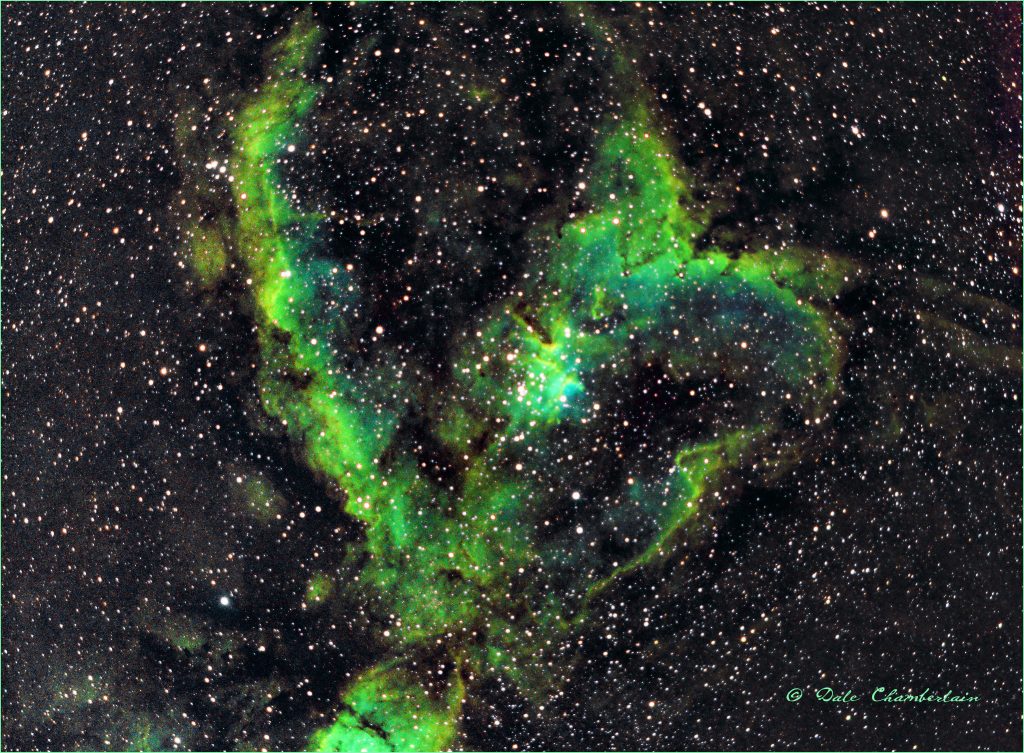
Object: The Heart Nebula, IC 1805, Sharpless 2-190, lies some 7500 light years away from Earth and is in the Perseus Arm of the Galaxy in the constellation Cassiopeia. It was discovered by William Herschel on 3 November 1787. This is an emission nebula showing glowing ionized hydrogen gas and darker dust lanes.
The very brightest part of this nebula is separately classified as NGC 896, because it was the first part of this nebula to be discovered.
The nebula’s intense color output and its configuration are driven by the radiation emanating from a small group of stars near the nebula’s center.
This open cluster of stars known as Melotte 15 contains a few bright stars nearly 50 times the mass of our Sun, and many more dim stars that are only a fraction of our Sun’s mass.
This image was captured in narrowband and processed in the Hubble palette, where red is ionized sulfur, green is hydrogen-alpha and blue is ionized oxygen.
Taken: October 2, 2019
Telescope: Skywatcher Esprit 80 ED Triplet APO Refractor
Mount: Paramount ME II unguided
Camera: ZWO ASI1600MM-Pro (cooled to -15C; unity gain) Bin 1×1.
Focuser: Manual
Filters used: Hydrogen-alpha, Oxygen-III and Sulphur-II on a ZWO 8 position filter wheel
Exposures: Ha, O-III and S-II 30×120 sec. each for a total exposure time of 3 hours; calibrated with 100 bias frames, 30 dark frames, 32 flat frames with 32 dark-flats
Seeing Conditions:
Processed with PixInsight and Photoshop CC 2019